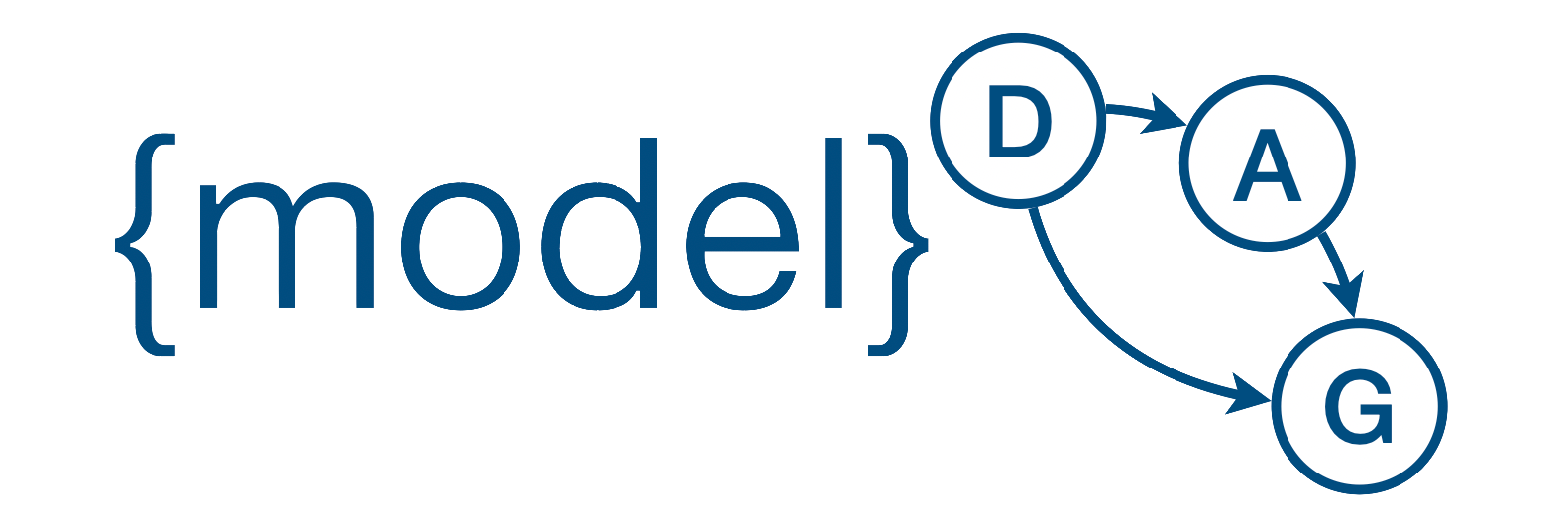modeldag#
modeldag#
DataFrame generator through simple dictionary forming a direct acyclic graph (DAG)
Installation#
pip install modeldag
Dependency#
numpy
pandas
graphviz (optional, used for visualize)
Concept#
Build a simple dictionary forming a DAG (this is the model) and call mdag = ModelDAG(model).
The model dictionary is a simple nested directory with the following format:
model = {key1 : {'func': func, 'kwargs': dict, 'as': None_str_list'},
key2 : {'func': func, 'kwargs': dict, 'as': None_str_list'},
...
}
ModelDAG will read this dictionary to create a pandas.DataFrame with each column called as (if given, key is used as name otherwise ). The dataframe columns are generated calling func(**kwargs).
The trick of modeldag is that you can use "@key1" in kwargs of key2 to use key1 generated values as input of key2 model. Furthermore modeldag will sort the input dict to make sure keys are drawn in the good order, so combine models are you wish !
Tutorials#
Learn more about


